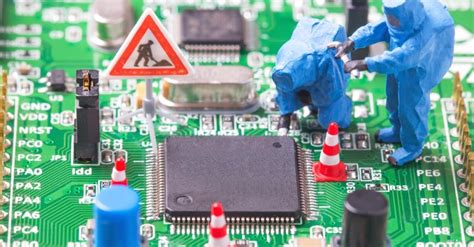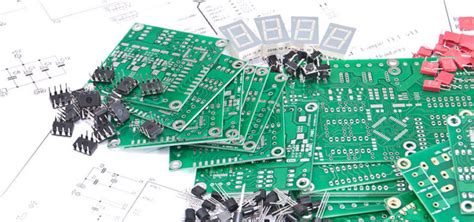Introduction
Custom LED PCB Assembly is a complex process that requires careful attention to detail and adherence to best practices to ensure a successful outcome. Failure to do so can result in a range of issues, from poor performance and reliability to complete failure of the assembled PCB. In this article, we will explore seven key strategies for preventing the case of failing custom LED PCB assembly, helping you to achieve a high-quality, reliable product every time.
1. Choose the Right PCB Material
Importance of Selecting the Appropriate PCB Material
The choice of PCB material is critical to the success of your custom LED PCB assembly. Different materials have different properties, such as thermal conductivity, dielectric constant, and coefficient of thermal expansion (CTE), which can significantly impact the performance and reliability of your assembled PCB.
Common PCB Materials and Their Properties
| Material | Thermal Conductivity (W/mK) | Dielectric Constant | CTE (ppm/°C) |
|---|---|---|---|
| FR-4 | 0.3 – 0.4 | 4.2 – 4.5 | 12 – 16 |
| Aluminum | 150 – 200 | – | 23 – 24 |
| Ceramic | 20 – 30 | 6 – 10 | 6 – 8 |
Factors to Consider When Selecting PCB Material for Custom LED PCB Assembly
When selecting the PCB material for your custom LED PCB assembly, consider the following factors:
- Thermal management requirements
- Electrical performance requirements
- Mechanical stability and durability
- Cost and availability

2. Optimize PCB Design for LED Assembly
Best Practices for Designing LED PCBs
To ensure the success of your custom LED PCB assembly, follow these best practices when designing your PCB:
- Use appropriate trace widths and spacing to minimize resistance and ensure proper current flow
- Incorporate adequate thermal management features, such as thermal vias and heat spreaders
- Consider the placement and orientation of components to minimize shadowing and ensure even illumination
- Use appropriate solder mask and silkscreen designs to facilitate assembly and inspection
Common PCB Design Mistakes to Avoid
Avoid these common PCB design mistakes to prevent failures in your custom LED PCB assembly:
- Inadequate trace widths and spacing, leading to excessive resistance and heat generation
- Poor thermal management, resulting in overheating and premature failure of components
- Incorrect component placement and orientation, causing shadowing and uneven illumination
- Insufficient solder mask and silkscreen designs, making assembly and inspection more difficult

3. Select High-Quality Components
Importance of Using High-Quality LEDs and Other Components
The quality of the components used in your custom LED PCB assembly is critical to its performance and reliability. Using high-quality LEDs and other components ensures consistent performance, longer lifespan, and reduced risk of failure.
Factors to Consider When Selecting LEDs and Other Components
When selecting LEDs and other components for your custom LED PCB assembly, consider the following factors:
- Luminous flux and efficacy
- Color temperature and rendering index (CRI)
- Forward voltage and current
- Thermal resistance and power dissipation
- Reliability and lifetime ratings
Sourcing Components from Reputable Suppliers
To ensure the quality and reliability of your components, source them from reputable suppliers with a proven track record of providing high-quality products. Consider the following when selecting a supplier:
- Quality control processes and certifications
- Technical support and documentation
- Lead times and minimum order quantities
- Pricing and payment terms

4. Implement Proper Soldering Techniques
Importance of Proper Soldering in Custom LED PCB Assembly
Proper soldering is essential for ensuring reliable electrical and mechanical connections between components and the PCB. Poor soldering can lead to issues such as cold joints, bridging, and tombstoning, which can cause failures in your custom LED PCB assembly.
Soldering Techniques for LED PCB Assembly
To achieve high-quality solder joints in your custom LED PCB assembly, consider the following soldering techniques:
- Reflow soldering: Ideal for surface-mount components, this technique involves applying solder paste to the PCB pads, placing components, and heating the assembly to melt the solder and form connections.
- Wave soldering: Suitable for through-hole components, this technique involves passing the PCB over a molten solder wave, which forms connections between the component leads and the PCB holes.
- Selective soldering: This technique combines the advantages of reflow and wave soldering, allowing for the selective soldering of specific components or areas on the PCB.
Common Soldering Defects and How to Prevent Them
To prevent soldering defects in your custom LED PCB assembly, be aware of these common issues and take steps to avoid them:
- Cold joints: Caused by insufficient heat or poor solder wetting, these can be prevented by ensuring proper temperature control and surface preparation.
- Bridging: Resulting from excess solder or improper component placement, bridging can be avoided by using appropriate solder amounts and ensuring accurate component placement.
- Tombstoning: Caused by uneven heating or component misalignment, tombstoning can be prevented by ensuring uniform heating and proper component placement.
5. Implement Quality Control Measures
Importance of Quality Control in Custom LED PCB Assembly
Implementing quality control measures throughout the custom LED PCB assembly process is essential for identifying and addressing potential issues before they lead to failures. Effective quality control helps to ensure consistent performance, reliability, and customer satisfaction.
Quality Control Techniques for LED PCB Assembly
To ensure the quality of your custom LED PCB assembly, consider implementing the following quality control techniques:
- Visual inspection: Perform visual checks at various stages of the assembly process to identify issues such as component misalignment, solder defects, and physical damage.
- Automated optical inspection (AOI): Use automated systems to quickly and accurately detect assembly defects, such as missing or misplaced components, solder bridging, and insufficient solder.
- Functional testing: Conduct functional tests to verify the performance and reliability of the assembled PCB, including tests for luminous flux, color consistency, and thermal management.
Establishing Quality Control Checkpoints and Procedures
To effectively implement quality control in your custom LED PCB assembly process, establish checkpoints and procedures at critical stages, such as:
- Incoming component inspection
- Post-solder inspection
- Pre-potting inspection
- Final functional testing
Document these procedures and train your personnel to ensure consistent adherence to quality control standards.
6. Manage Thermal Challenges
Importance of Thermal Management in LED PCB Assembly
Proper thermal management is critical for ensuring the performance, reliability, and longevity of your custom LED PCB assembly. LEDs generate significant amounts of heat, which can lead to reduced luminous flux, color shifts, and premature failure if not effectively dissipated.
Thermal Management Techniques for LED PCB Assembly
To effectively manage thermal challenges in your custom LED PCB assembly, consider implementing the following techniques:
- Thermal vias: Incorporate thermal vias in your PCB design to provide a low-resistance path for heat to transfer from the LED to the PCB substrate and ultimately to the ambient environment.
- Heat spreaders: Use heat spreaders, such as metal-core PCBs (MCPCBs) or aluminum substrates, to efficiently distribute heat away from the LEDs and across a larger surface area.
- Thermal Interface materials (TIMs): Apply TIMs, such as thermal paste or thermal pads, between the LED and the PCB or heat spreader to minimize thermal resistance and improve heat transfer.
Designing for Optimal Thermal Performance
To achieve optimal thermal performance in your custom LED PCB assembly, consider the following design strategies:
- Maximize the surface area of thermal vias and heat spreaders
- Minimize the thermal resistance of the PCB substrate and TIMs
- Ensure adequate spacing between LEDs to prevent thermal crosstalk
- Consider the use of Active Cooling solutions, such as fans or heat sinks, for high-power applications
7. Partner with Experienced PCB Assembly Providers
Importance of Choosing the Right PCB Assembly Partner
Partnering with an experienced and reliable PCB assembly provider is essential for ensuring the success of your custom LED PCB assembly project. The right partner will have the expertise, equipment, and quality control processes in place to deliver high-quality, reliable assemblies consistently.
Factors to Consider When Selecting a PCB Assembly Partner
When choosing a PCB assembly partner for your custom LED PCB project, consider the following factors:
- Experience and expertise in LED PCB assembly
- Quality control processes and certifications
- Manufacturing capabilities and equipment
- Lead times and production capacity
- Communication and customer support
Benefits of Working with an Experienced PCB Assembly Partner
Working with an experienced PCB assembly partner offers several benefits for your custom LED PCB project, including:
- Access to specialized knowledge and best practices
- Reduced risk of assembly errors and failures
- Faster turnaround times and improved production efficiency
- Scalability and flexibility to accommodate changes in demand
- Ongoing technical support and collaboration
FAQ
1. What are the most common causes of failure in custom LED PCB assemblies?
The most common causes of failure in custom LED PCB assemblies include poor thermal management, improper soldering, low-quality components, and inadequate PCB design.
2. How can I ensure consistent color quality across multiple LED PCB assemblies?
To ensure consistent color quality across multiple LED PCB assemblies, use high-quality LEDs with tight binning tolerances, implement strict quality control measures, and maintain consistent manufacturing processes.
3. What are the benefits of using metal-core PCBs (MCPCBs) for LED PCB assembly?
Metal-core PCBs (MCPCBs) offer several benefits for LED PCB assembly, including improved thermal management, reduced thermal resistance, and better mechanical stability compared to traditional FR-4 PCBs.
4. How do I select the appropriate solder paste for my custom LED PCB assembly?
When selecting solder paste for your custom LED PCB assembly, consider factors such as the solder alloy composition, particle size, flux activity, and compatibility with your specific components and PCB materials.
5. What are the advantages of partnering with an experienced PCB assembly provider for my custom LED PCB project?
Partnering with an experienced PCB assembly provider offers advantages such as access to specialized expertise, reduced risk of assembly errors, faster turnaround times, and ongoing technical support and collaboration.
Conclusion
Preventing the case of failing custom LED PCB assembly requires a comprehensive approach that addresses key aspects such as PCB material selection, design optimization, component quality, soldering techniques, quality control, thermal management, and partnering with experienced assembly providers. By implementing the seven strategies outlined in this article, you can significantly reduce the risk of failures and ensure the success of your custom LED PCB assembly project.

No responses yet